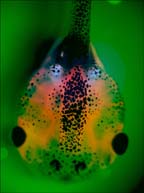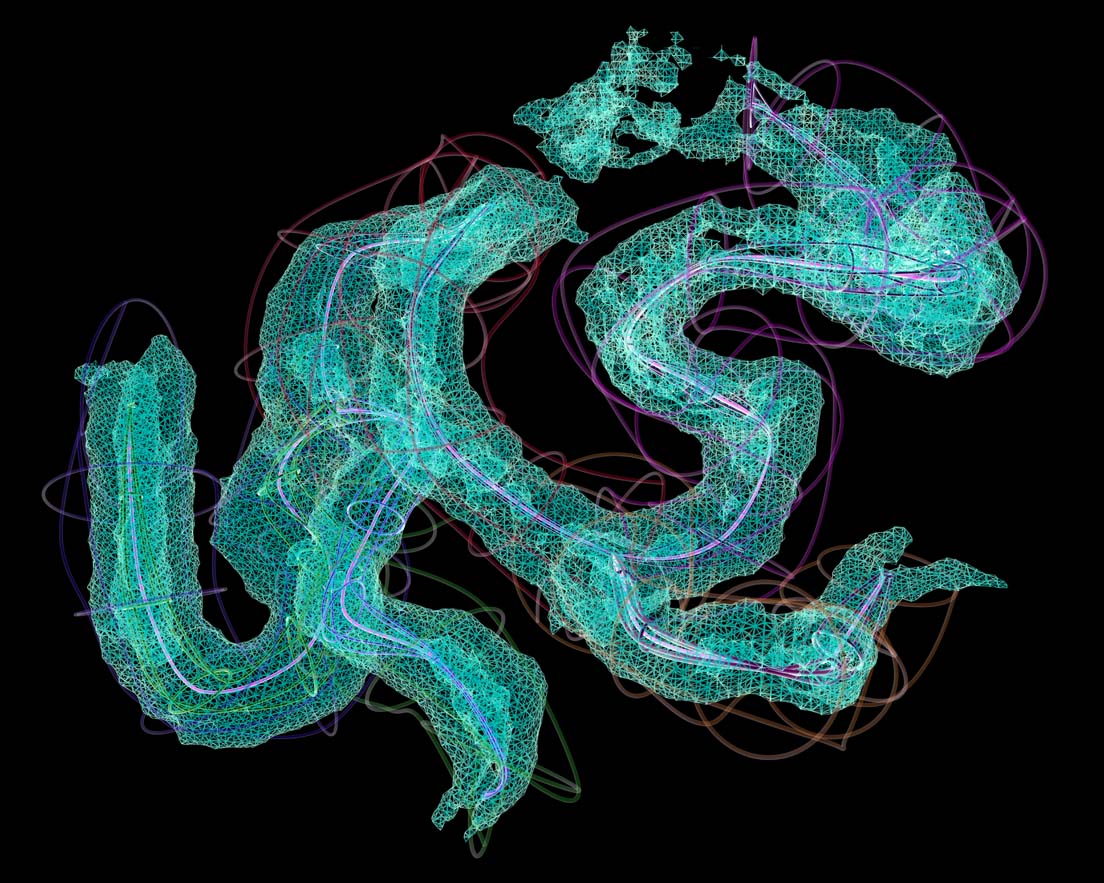|
 |
The kidney has been used as a model for investigating how organs form for many years, usually in the mouse. Amphibians have many advantages over mice as an experimental organism, for example we can generate thousands of embryos, and can manipulate embryonic development by microdissection in a simple saline solution. In contrast each mouse only produces a small number of embryos, and internal development makes embryonic manipulation extremely difficult. A further advantage is that amphibians have a very simple embryonic kidney, the pronephros, which is much like an enlarged version of a single human kidney nephron. The average human kidney on the other hand, contains about 1 million nephrons, and is much more difficult to work with. Another big advantage of the frog system is microinjection.
We can test the effect of a gene on pronephric development simply by microinjecting the mRNA coding for the gene product of interest into developing embryos. Xenopus develop very quickly, so we can study the effect of injections on kidney development two days later. We use a combination of classical embryology and modern molecular biology to explore basic questions about how cells learn that they are to form kidney, and how they respond to this information and activate the appropriate gene expression patterns.
Key references:
McCoy, K.E., Zhou, X. and Vize, P.D. (2011). Non-canonical wnt signals antagonize and canonical wnt signals promote cell proliferation in early kidney development. Developmental Dynamics 240; 1558-1566
Urban, A., Zhou, X. Ungoss, J., Raible, D.W., Altmann, C.R. and Vize, P.D. (2006). FGF is essential for both condensation and mesenchymal-epithelial transition stages of pronephric kidney tubule development.. Developmental Biology 297, 103-117
Zhou, X. and Vize, P.D. (2004). Proximo-distal specialization of epithelial transport processes within the Xenopus pronephric tubules. Developmental Biology 271: 322-338
Vize, P.D., Wolff, A and Bard, J. (Eds) The Kidney: from normal development to congenital disease. Academic Press, 2003. ISBN: 0127224416
Vize PD, Seufert DW, Carroll TJ, Wallingford JB. Model systems for the study of kidney development: use of the pronephros in the analysis of organ induction and patterning. Dev Biol. 1997 Aug 15;188(2):189-204.
See additional kidney references

About this image. This is a computer generated model of a Xenopus pronephric nephron rendered by Victor Gerth in our lab. The fine mesh is a surface generated by Amira software from 3G8 immunofluorescence. The wire model surrounding the mesh is a surface model generated by 3DMax. Image copyright Victor Gerth and Peter Vize (2005).